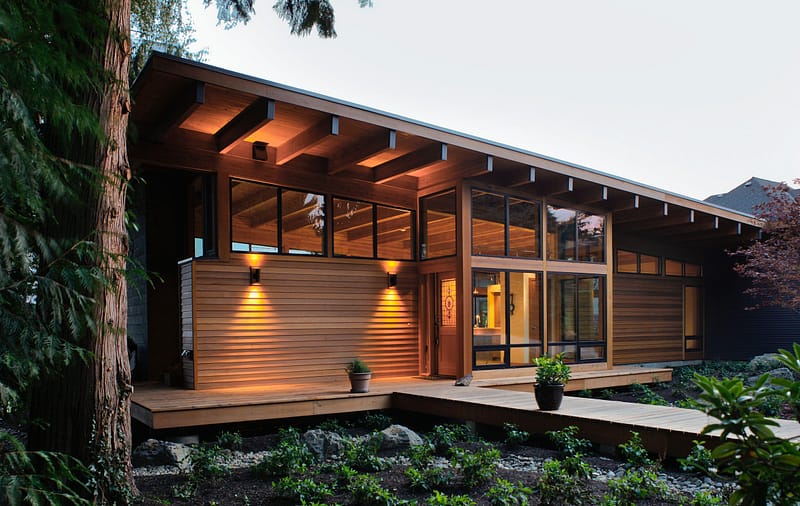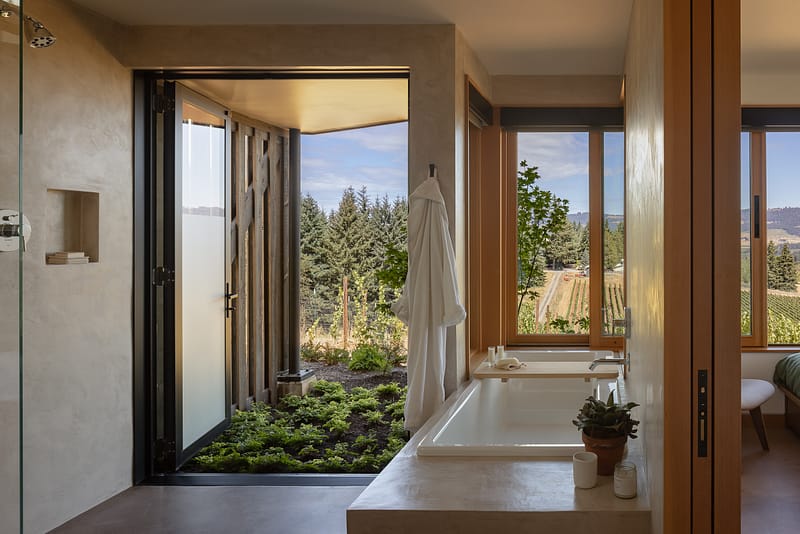The construction industry has been cautious about change. Rules of thumb and decades-old conventional wisdom tend to rule the day. This innate conservatism makes sense given the high stakes of construction. Buildings are a big investment with big health and safety implications. Why risk something new when we can just follow the well-worn path, the tried and true?
Over the past ten or fifteen years a couple developments have emerged that challenge the wisdom of just “doing it the old way” in construction, however. First, the field of building science – our physics-based understanding of how buildings function and how heat, air, and moisture interact with building components – is all grown up now. And the science is telling us that the “old way” not only wastes energy, it delivers questionable indoor air quality and comfort to building occupants. The science also illuminates a safe and practical road to a better way of building, “high performance building,” that brings superior efficiency, health, comfort, and durability.
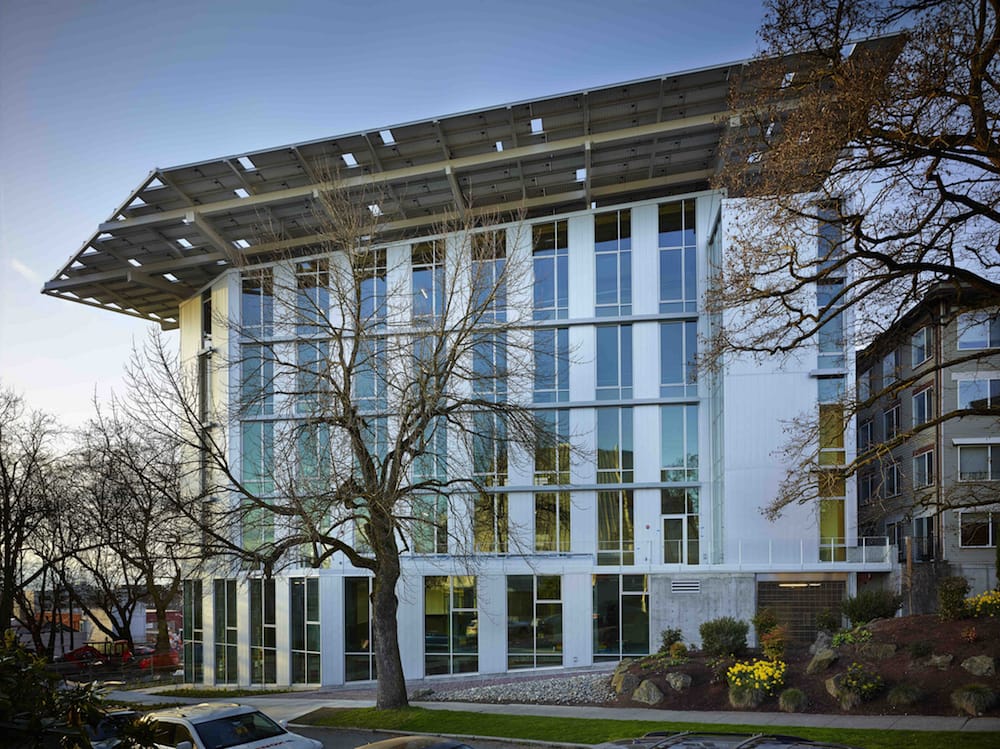
The Bullitt Center, arguably the world’s leading high performance building. (Photo by Brad Kahn)
High performance building is a form of green building, but one with a singular focus on the energy performance of our buildings. It is not about bamboo floors or green roofs. A suite of green building certifications address this focus:
Passive House (aka Passivhaus) is the standard bearer of high performance building, requiring revolutionary improvements in building in energy performance. We typically certify our projects with the US-based Passive House Institute US (PHIUS). (See Pumpkin Ridge Passive House as one of many Passive House examples built by H&H.)
Net zero energy buildings (projects whose annual onsite energy generation, usually from photovoltaic arrays, equals or exceeds annual building energy consumption) also depend on excellent energy performance, except in rare cases when very large solar arrays compensate for run-of-the-mill building performance to reach the “net zero” energy balance. The International Living Future Institute (ILFI) offers a robust Net Zero Energy Building certification that requires verification based on one year of measured energy data. (Madrona Passive House is registered with ILFI’s Net Zero Energy Building program, with certification expected in late 2016.)
ILFI’s Living Building Challenge is the moonshot of high performance and green building and includes net zero energy performance as one of seven all-encompassing green building targets. (The Bullitt Center is perhaps the most famous example of a certified Living Building.)
LEED has been less successful at ensuring excellent energy performance than these other certifications, but its broad sustainability goals make it a good complement to Passive House’s laser-focus on energy. (Karuna House combined LEED and Passive House certifications.)
In our view, the key to high performance building is to focus first on the building envelope – walls, roof and foundation.
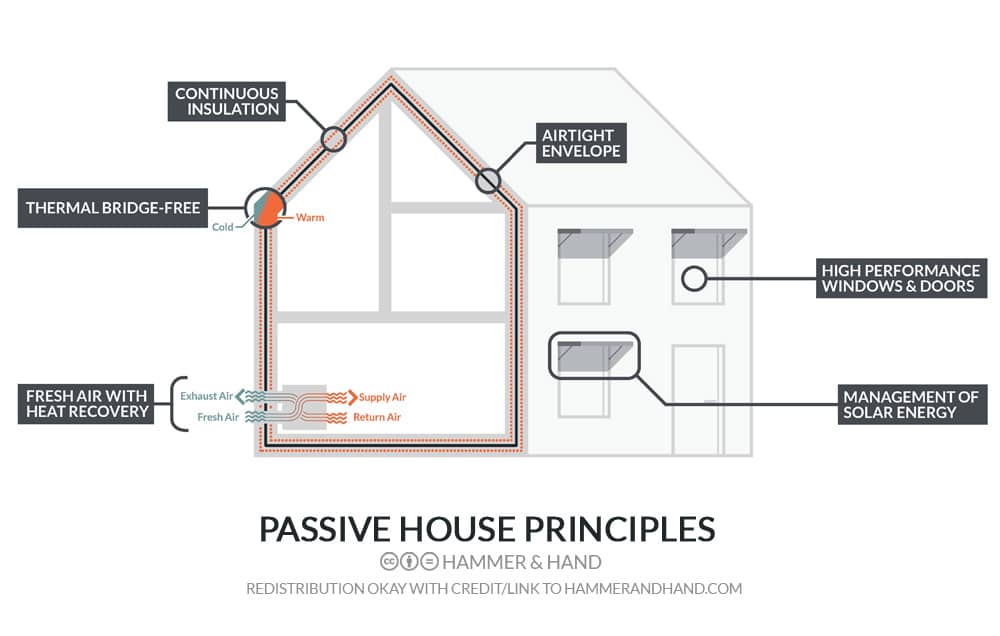 Airtight construction controls the transfer of heat and moisture into and through the building envelope. Thermal bridge-free assemblies avoid the envelope penetrations that sap buildings of energy, comfort, and durability. Continuous insulation keeps heat where it’s wanted. Excellent windows and doors limit heat loss while capturing daylight and passive solar energy. Shading elements shield the building from passive solar gains when unwanted. And a constant supply of filtered fresh air comes in through a balanced heat recovery (or energy recovery) ventilation system that recaptures the thermal energy of exhaust air and keeps it inside the building.
Airtight construction controls the transfer of heat and moisture into and through the building envelope. Thermal bridge-free assemblies avoid the envelope penetrations that sap buildings of energy, comfort, and durability. Continuous insulation keeps heat where it’s wanted. Excellent windows and doors limit heat loss while capturing daylight and passive solar energy. Shading elements shield the building from passive solar gains when unwanted. And a constant supply of filtered fresh air comes in through a balanced heat recovery (or energy recovery) ventilation system that recaptures the thermal energy of exhaust air and keeps it inside the building.
This envelope-first focus dramatically reduces the energy demand to heat and cool high performance building. In fact, Passive House buildings routinely reduce heating and cooling energy by 90%.
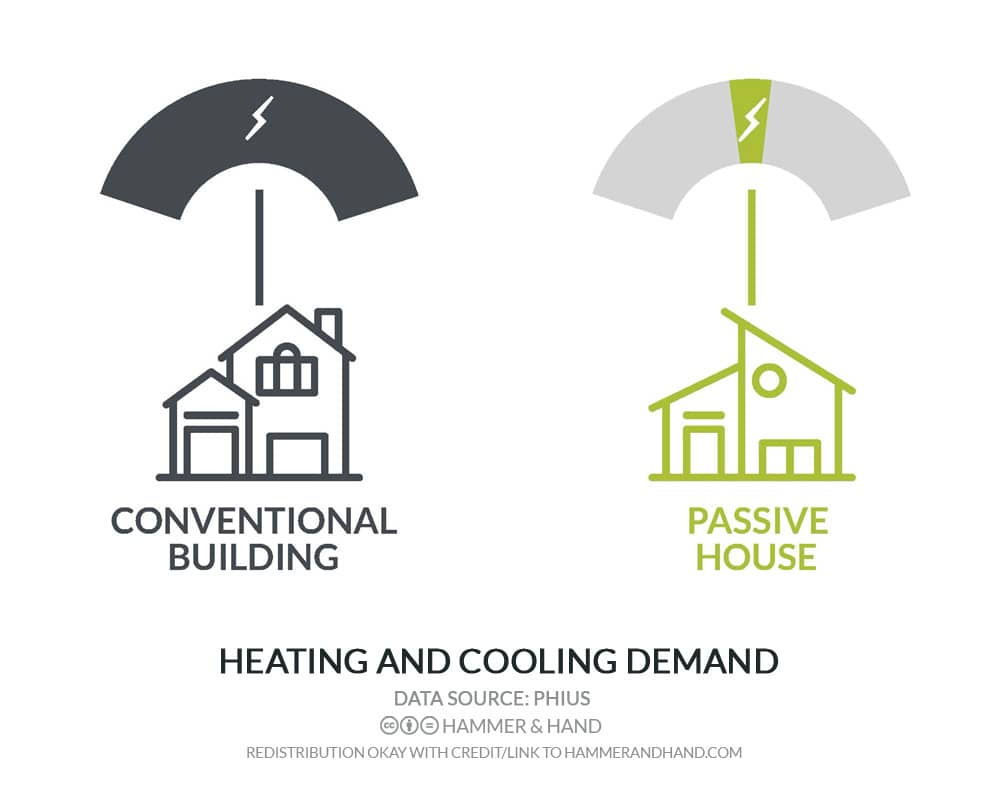
Small heat pumps can then meet this small heating and cooling super-efficiently. Even after adding in lighting and plug loads, building energy use is so low that a relatively modest solar array can bring high performance passive buildings to net zero energy performance.
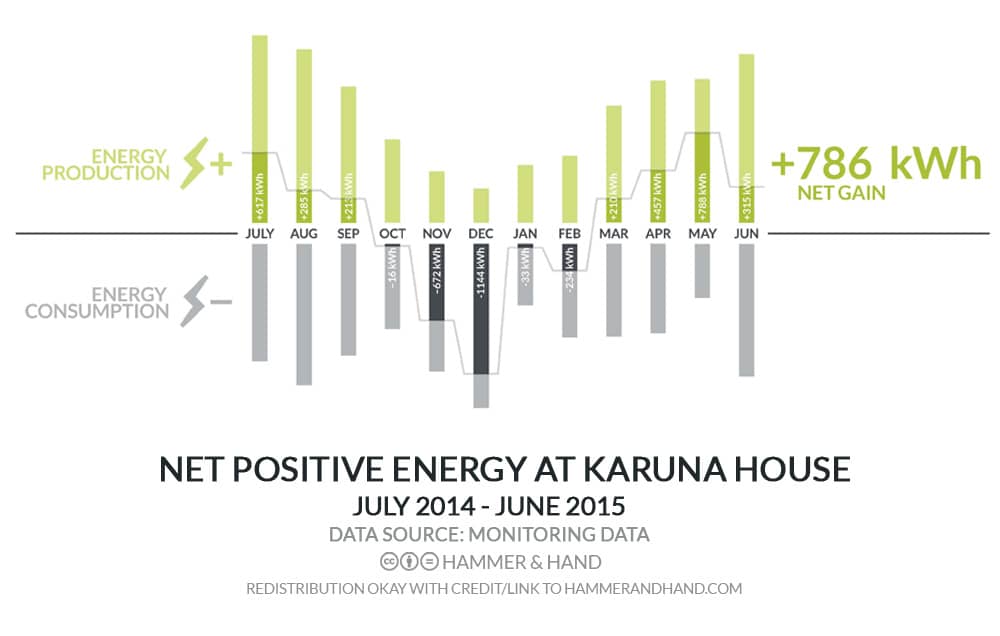 From a builder’s perspective, the beauty of high performance building is that it’s not just about making our carbon footprint smaller, it’s also just the right way to build. The same suite of strategies and components that delivers über-efficiency also makes for buildings that are more durable, comfortable, and healthy. The diagram below shows US Department of Energy measurement of various building types. According to the DOE, Passive House (light green) and the closely-related Zero Energy Ready Home (dark green) significantly outperforms DOE’s Energy Star buildings (gray) and conventional buildings (black) across the board.
From a builder’s perspective, the beauty of high performance building is that it’s not just about making our carbon footprint smaller, it’s also just the right way to build. The same suite of strategies and components that delivers über-efficiency also makes for buildings that are more durable, comfortable, and healthy. The diagram below shows US Department of Energy measurement of various building types. According to the DOE, Passive House (light green) and the closely-related Zero Energy Ready Home (dark green) significantly outperforms DOE’s Energy Star buildings (gray) and conventional buildings (black) across the board.
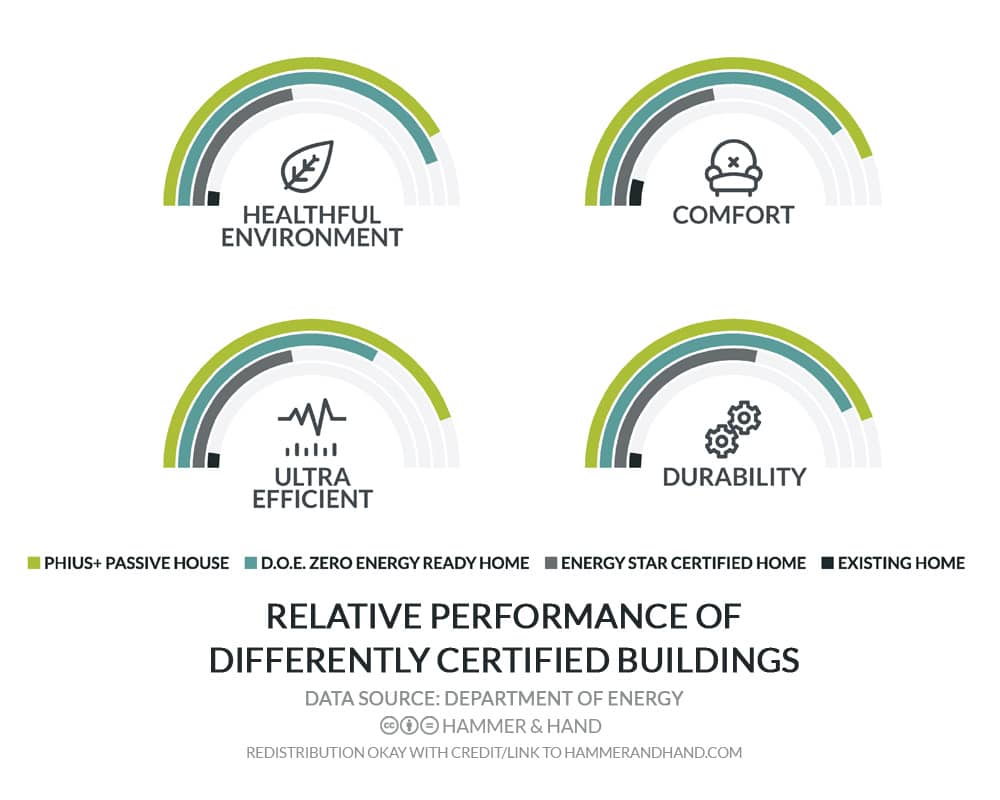 High performance building requires a holistic approach, with high performance building strategies and components integrated with another in a web.
High performance building requires a holistic approach, with high performance building strategies and components integrated with another in a web.

This web reflects the fact that buildings behave as systems, much like ecosystems. Changes to one part of the system can have big impacts elsewhere. There’s a critical difference between ecology and building science, however. Ecosystems are wildly complex. Buildings? Not so wildly. Yes, they are complex, but they are knowable and manipulable. High performance building, and the multi-layered benefits it brings, is the manifestation of our systems-based understanding of building physics.
Save


